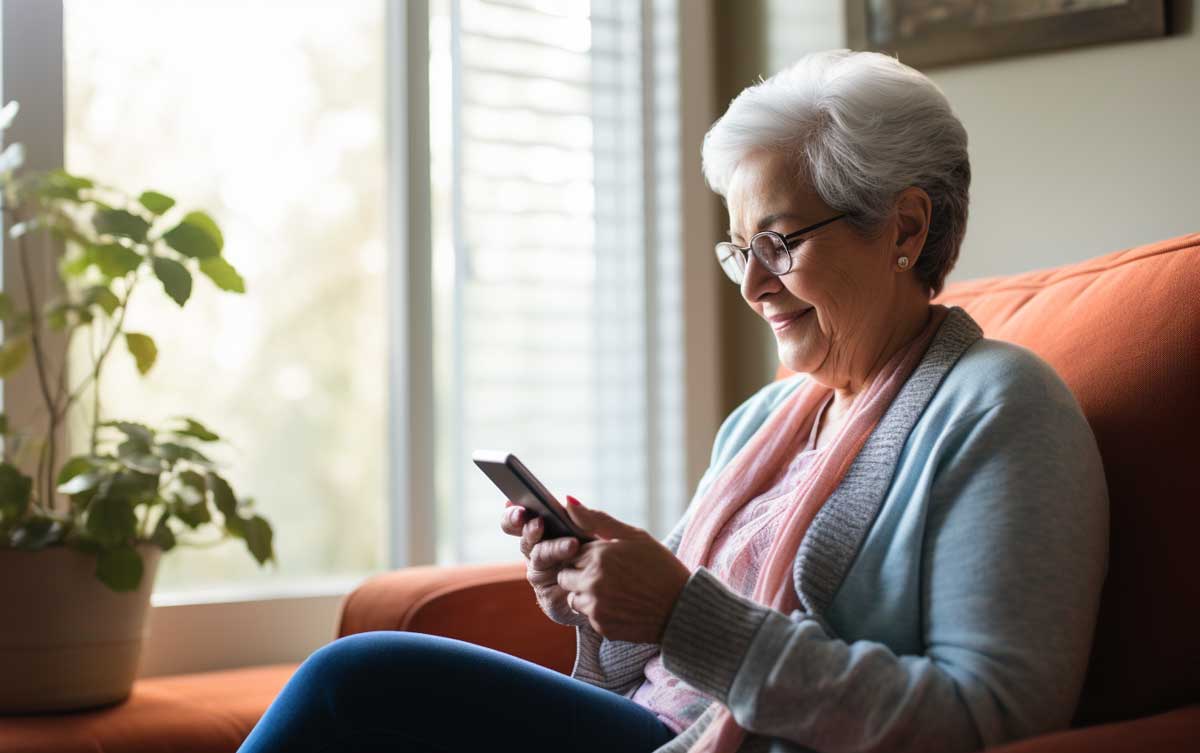Lifeline offers a monthly discount of up to $9.25 monthly for phone or internet services.[1]
In order to qualify for Lifeline, Americans must earn less than 135% of the federal poverty guidelines.[2]
ACP has broader eligibility criteria, allowing households to qualify if at least one member is at or below 200% of the federal poverty guidelines or participates in similar support programs.[3]
The Lifeline program includes phone services, whereas the ACP program only provides broadband connectivity.[4]
In 2021, the Infrastructure Investment and Jobs Act provided a $14 billion fund for the Affordable Connectivity Program (ACP).[5]
Lifeline is funded by a universal service fee that utility customers must pay.[6]
Funds for ACP are directly appropriated by Congress, ensuring a more balanced distribution of its burdens.[7]
ACP offers up to $30 per month towards broadband service and up to $75 per month if the household is on qualifying Tribal lands.[8]
15% of U.S. households still lack high-speed internet access, highlighting the importance of programs like ACP.[11]
The pandemic saw a 70% surge in internet usage, emphasizing the critical role of broadband in our daily lives.[12]
According to BroadbandNow, 8 of 10 households in Fourth District states cannot afford a broadband subscription that costs $60 or more per month.[13]
Households with broadband connectivity are 50% likelier to engage in remote work or online learning.[14]
In the modern digital age, internet connectivity is no longer a luxury but a necessity. The Affordable Connectivity Program (ACP) and the Lifeline program are two critical broadband programs that aim to bridge the digital divide, providing affordable and reliable internet access to low-income households in the United States. While both programs share a common goal, their features, eligibility requirements, and benefits vary significantly.
Learn about the Affordable Connectivity Program (ACP) vs. Lifeline Program, two key federal initiatives to provide low-income households with affordable phone and broadband services. Discover how these programs work, their benefits, and how to qualify.
Fast Facts
The ACP offers up to $30 per month towards broadband service and up to $75 per month if the household is on qualifying Tribal lands.
Understanding The Affordable Connectivity Program (ACP)
The Affordable Connectivity Program (ACP) was created with a $14 billion fund from the Infrastructure Investment and Jobs Act of 2021.[5] It’s a federal initiative that offers financial assistance to qualifying households to ensure they have affordable high-speed internet access. The program emerged after the pandemic, recognizing the increased reliance on broadband connectivity for work, education, and healthcare.
The ACP offers up to $30 per month towards broadband service and up to $75 per month if the household is on qualifying Tribal lands. Moreover, the program provides a one-time discount of up to $100 for a laptop, desktop computer, or tablet purchased through a participating provider.
Trends and Statistics on Broadband Connectivity and ACP
As the digital landscape evolves, understanding broadband connectivity becomes paramount. Dive into key statistics and trends that shed light on the Affordable Connectivity Program (ACP) and its pivotal role in providing communication and connectivity to those far of reach.
- Connectivity Gaps: According to the 2020 American Community Survey (ACS), just more than 13% of households in the Fourth District had no internet access. This number climbs to almost 19% when considering only low- and moderate-income (LMI) areas.
- Rising Demand: The pandemic saw a 70% surge in internet usage, emphasizing the critical role of broadband in our daily lives.[12]
- Connectivity Gaps: Despite advancements, 15% of U.S. households still lack high-speed internet access, highlighting the importance of programs like ACP.[11]
- Broadband Access and Affordability: The cost is a major barrier to accessing devices and monthly broadband subscriptions in urban areas. According to BroadbandNow, 8 of 10 households in Fourth District states cannot afford a broadband subscription of $60 per month or more.[13] In contrast, rural areas have issues with broadband availability due to topographic challenges and sparse population density.
- Economic Impact: Households with broadband connectivity are 50% likelier to engage in remote work or online learning.[14]
- Tribal Lands: Connectivity in Tribal lands lags, with 25% lacking basic broadband services, making the increased ACP benefit crucial.[8]
- ACP Participation: Many Fourth District households qualify for the ACP, but the program needs to be utilized. The Fourth District, overall, shows a higher participation rate than the nation, but there needs to be more ACP participation versus eligibility, especially in rural areas.
- Device Reliance: 60% of adults reported an increased reliance on laptops and tablets during the pandemic, underscoring the significance of ACP's device discount.
Diving Into The Lifeline Program
Lifeline is a long-standing federal program that provides discounted phone and internet services to eligible low-income consumers. Established in the mid-1980s, Lifeline has evolved over the years to include broadband internet service, reflecting the changing communication needs of Americans.
Lifeline offers a monthly discount of up to $9.25 per month for phone or internet services.[1] Unlike ACP, Lifeline does not offer additional discounts for equipment purchases. However, some providers may offer devices at discounted rates as part of their Lifeline service.
Fast Facts
ACP provides $30 per month to eligible households, as well as a one-time discount of up to $100 for purchasing devices like laptops, desktop computers, and tablets.
Key Differences Between ACP And Lifeline
While both ACP and Lifeline aim to increase broadband access among low-income households, these programs have several key differences.
Benefit Amount
ACP offers a higher monthly benefit than Lifeline. Specifically, ACP provides $30 per month to eligible households and a one-time discount of up to $100 for purchasing devices like laptops, desktop computers, and tablets. In contrast, Lifeline provides a $9.25 monthly subsidy for broadband support[1].
Eligibility
Both programs have income-based eligibility requirements, but they differ in specifics. ACP has broader eligibility criteria, allowing households to qualify if at least one member is at or below 200% of the federal poverty guidelines or participates in similar support programs.[3] On the other hand, Lifeline supports Americans with income at or below 135% of the federal poverty guidelines.[2]
Scope
Lifeline includes phone services in its program, whereas ACP focuses solely on broadband connectivity.[4] This distinction is crucial as the ACP was designed to address the increasing reliance on broadband, especially during the pandemic, while Lifeline has its roots in subsidizing voice telephony.
Program Participation
Unlike Lifeline, which has seen limited participation from broadband providers due to its origins and restrictions, ACP boasts widespread participation. This is largely because ACP is technology-neutral, allowing more providers to offer various services eligible for support.
Funding Mechanism
Lifeline relies on a universal service fee that all subscribers to utility telephony services must pay.[6] In contrast, Congress directly appropriates funds for ACP, ensuring a more balanced distribution of the program's burdens.[7]
Potential for Fraud
Historically, Lifeline faced issues with fraud, especially before implementing the national verifier[8]. With its direct oversight by Congress and the use of a national verifier, ACP has mechanisms in place to limit potential fraud.[9]
The Similarities Between ACP And Lifeline
Despite the differences, ACP and Lifeline share a common mission of promoting digital inclusion.
- Goal: Both programs aim to make communication services more affordable for low-income households.
- Federal Funding: ACP and Lifeline are federally funded initiatives, part of the larger effort to ensure all Americans have access to essential communication services.
- Participating Providers: Both programs partner with telecommunications providers to offer discounted services.
Fast Facts
Connectivity in Tribal lands lags, with 25% lacking basic broadband services, making the increased ACP benefit crucial.
Affordable Connectivity Program (ACP)
The Affordable Connectivity Program (ACP) was established by the Infrastructure Investment and Jobs Act and gives eligible households a discount on broadband service and connected devices[1]. The program began accepting enrollments on December 31, 2021, to extend the earlier Emergency Broadband Benefit Program.
In addition to providing broadband support, the program includes initiatives such as the Affordable Connectivity Outreach Grant Program and the Your Home, Your Internet Pilot Program. These programs are designed to increase awareness of the ACP, particularly among recipients of federal housing assistance.
Lifeline Program For Low-Income Consumers
The Lifeline program, in operation since 1985, provides a discount on phone service for qualifying low-income consumers. This program ensures all Americans have the opportunities and security that phone service brings, including connecting to jobs, family, and emergency services.
The Lifeline program was modernized in 2016 to include broadband as a support service, with the program providing support amounts for both voice and broadband services. The Lifeline program is administered by the Universal Service Administrative Company (USAC), responsible for data collection, maintenance, support calculation, and disbursement for the low-income program.
Challenges and Implications of ACP and Lifeline
The Affordable Connectivity Program (ACP) and Lifeline, while instrumental in bridging the digital divide, face unique challenges:
- Broadband Infrastructure: Despite ACP's focus on affordability, many rural areas still need more infrastructure for high-speed internet. This means that some households can't access quality broadband even with financial assistance.
- Underutilization: Many eligible households need to be made aware of these programs. The Fourth District, for instance, shows a gap in ACP participation versus eligibility.[10] Increased outreach is essential to ensure more households benefit.
- Fraud Concerns: Lifeline historically faced issues with fraud. While ACP has mechanisms to limit potential fraud, continuous oversight is crucial to maintaining the program's integrity.
- Evolving Needs: As the digital landscape changes, so do the needs of households. Programs like ACP and Lifeline must adapt, whether expanding benefits or incorporating new technologies.
By addressing these challenges head-on, ACP and Lifeline can better serve their purpose and ensure all Americans have access to essential digital services.
How To Qualify For These Programs
To qualify for the Affordable Connectivity Program, your eligibility may be based on your household income or participation in certain government assistance programs such as SNAP, Medicaid, or WIC. You may also qualify for the ACP if you or anyone in your household already receives a Lifeline benefit.
For the Lifeline program, to apply, you generally have to use the National Verifier application system, which verifies applicants’ eligibility and recertifies subscriber eligibility annually. Please note that consumers in certain states like California, Texas, and Oregon have a different application process for the federal Lifeline benefit.
How to Avail of ACP and Lifeline Programs
Broadband connectivity is pivotal in our daily lives for remote work, online education, or staying connected with loved ones. Recognizing this, the U.S. government has introduced programs like the Affordable Connectivity Program (ACP) and Lifeline to assist low-income households in accessing affordable broadband services.
If you're considering availing of these benefits, here's a step-by-step guide to help you navigate the process:
- Determine Eligibility: Begin by assessing if you meet the income-based criteria or are already participating in qualifying programs like Medicaid or Federal Public Housing Assistance.
- Gather Necessary Documents: Ensure you have all the required documents ready before applying. This could include proof of income, participation in qualifying programs, or other relevant paperwork.
- Apply Online: The application process has been streamlined for user convenience. For ACP, head to the official Affordable Connectivity Program website. The National Verifier portal is your go-to destination if you're interested in Lifeline.
- Choose a Provider: Select a participating broadband provider nearby once your application is approved. It's advisable to research and choose a provider that best fits your connectivity needs.
- Stay Updated: The digital landscape is ever-evolving. As such, program guidelines might change. Make it a habit to regularly review these guidelines to stay informed about any new benefits or changes.
- Maximize the Benefits: Remember, these programs aim to make broadband access affordable for all. So, take full advantage of their opportunities and ensure you have the connectivity you need to thrive in the digital world.
FAQs
To better understand the similarities between ACP vs. Lifeline, we have answered some of the more commonly asked questions.
The Affordable Connectivity Program is a federal initiative that provides discounts on broadband service and connected devices to eligible households. The Infrastructure Investment and Jobs Act established it and began accepting enrollments on December 31, 2021.
The Lifeline program is a longstanding federal program that provides a discount on phone service for qualifying low-income consumers. Since 2016, it also includes broadband as a support service.
For the ACP, eligibility may be based on your household income, participation in certain government assistance programs, or if you or anyone in your household already receives a Lifeline benefit. For the Lifeline program, you generally have to use the National Verifier application system, which verifies applicants’ eligibility and recertifies subscriber eligibility annually. However, consumers in certain states have a different application process for the federal Lifeline benefit.
ACP Vs. Lifeline
ACP and Lifeline are vital programs working towards digital equity, each with its strengths and considerations. They represent critical resources for low-income households needing broadband access, providing both opportunity and connectivity in today’s digital world.
Interested in how Comcast’s initiatives fit into the affordability landscape? Explore Comcast’s ACP Program in our detailed blog post and understand its unique offerings in the context of broader assistance programs like ACP and Lifeline.
Learn about how to get a free cell phone with food stamps. Visit Gov Relations and explore our comprehensive resources to learn more.

1. "Affordable Connectivity Program Consumer FAQ." Federal Communications Commission. https://www.fcc.gov/affordable-connectivity-program-consumer-faq.
2. Graber, Hannah, and Merissa Piazza. "Increasing Broadband Access and Affordability: How the Affordable Connectivity Program Can Bridge the Digital Divide." Federal Reserve Bank of Cleveland, 08 Sept. 2022. https://www.clevelandfed.org/publications/notes-from-the-field/2022/nftf-20220908-increasing-broadband-access-and-affordability.
3. "Affordable Connectivity Program." Infrastructure Investment and Jobs Act, 2021. https://www.fcc.gov/affordable-connectivity-program#:~:text=On%20November%2015%2C%202021%2C%20the,Affordable%20Connectivity%20Program%20(ACP).
4. "Lifeline Support for Affordable Communications." Federal Communications Commission. https://www.fcc.gov/general/lifeline-program-low-income-consumers.
5. Westling, Jeffrey. "ACP versus Lifeline: A Comparative Analysis of Broadband Affordability Subsidies." American Action Forum, https://www.americanactionforum.org/insight/acp-versus-lifeline-a-comparative-analysis-of-broadband-affordability-subsidies/.
6. "Universal Service Fund." Federal Communications Commission. https://www.fcc.gov/general/universal-service-fund.
7. "Infrastructure Investment and Jobs Act." Congress.gov, 2021. http://publicservice.vermont.gov/lifeline-telecommunications-program#:~:text=Lifeline%20is%20the%20FCC's%20program, participating.
8. "Lifeline Program for Low-Income Consumers." Federal Communications Commission. https://www.fcc.gov/general/lifeline-program-low-income-consumers.
9. Westling, Jeffrey. "Potential for Fraud in ACP." American Action Forum. https://www.americanactionforum.org/insight/acp-versus-lifeline-a-comparative-analysis-of-broadband-affordability-subsidies/.
10. "Affordable Connectivity Program." Federal Communications Commission, https://www.fcc.gov/acp.
11. "34% of Lower-Income Home Broadband Users Have Had Trouble Paying for Their Service Amid COVID-19." Pew Research Center, https://www.pewresearch.org/short-reads/2021/06/03/34-of-lower-income-home-broadband-users-have-had-trouble-paying-for-their-service-amid-covid-19/.
12. Beech, Mark. "COVID-19 Pushes Up Internet Use 70% And Streaming More Than 12%, First Figures Reveal." Forbes, Forbes Magazine, 25 Mar. 2020, www.forbes.com/sites/markbeech/2020/03/25/covid-19-pushes-up-internet-use-70-streaming-more-than-12-first-figures-reveal/?sh=266ac0693104.
13. "Computer and Internet Use." American Community Survey, U.S. Census Bureau, 2020, www.census.gov/acs/www/about/why-we-ask-each-question/computer/.
14. Irwin, Véronique. "Students' Internet Access Before and During the Coronavirus Pandemic by Household Socioeconomic Status." National Center for Education Statistics (NCES) Blog, National Center for Education Statistics, https://nces.ed.gov/blogs/nces/post/students-internet-access-before-and-during-the-coronavirus-pandemic-by-household-socioeconomic-status.






